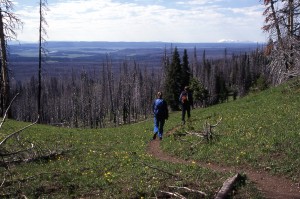Most people understand the importance of carrying plenty of water on a long trek—for maintaining hydration and as a reserve in case you get lost or injured or the shuttle you planned to take back to your car doesn’t show. And most people know (or sense) that they need to stay ahead of their thirst. Drink before you get cotton-mouth.
People pay less attention to staying ahead of their hunger, and that’s a mistake. You need to replenish electrolytes as you go, and you should carry a little something extra to eat in case your best-laid plans fall apart. And while, yes, you can burn through hundreds and hundreds of calories on a nine-mile hike, the wilderness is not the place for dieting.
So after starting the day with a robust meal, it’s important to throw fruit, nuts and other snacks—especially salty snacks—in your pack.
The National Park Service web site makes this point over and over, in articles like the very helpful “How NOT to die in the Desert.” And the Grand Canyon Hiking FAQ notes that inadequate food can slow you down considerably when you’re hiking out of that big ditch: “The South Kaibab Trail is 6.8 miles to Bright Angel Campground and the Bright Angel Trail is 9.3 miles. It will take most hikers between 4 and 5 hours to get to the campground on either trail. Oddly enough, very few people ask how long the return hike will take. The return hike may take twice as long, though 7 to 8 hours seems to be average. Underestimating the elevation change and not eating or drinking enough can easily add a few hours to those averages.” (Emphasis added.)
We were reminded of the benefits—nay, the pleasing necessity—of salty snacking by Brian Passey’s recent account of a Bryce Canyon trek in St. George Magazine. In this instance, the hike turned just a bit bad, but it’s easy to see how it could have gone way wrong. And how a few tasty pack snacks would have made it nothing more than a modest inconvenience and an interesting anecdote over a slightly delayed dinner.
Photo of visitors hiking Yellowstone’s Observation Peak trail via National Park Service










